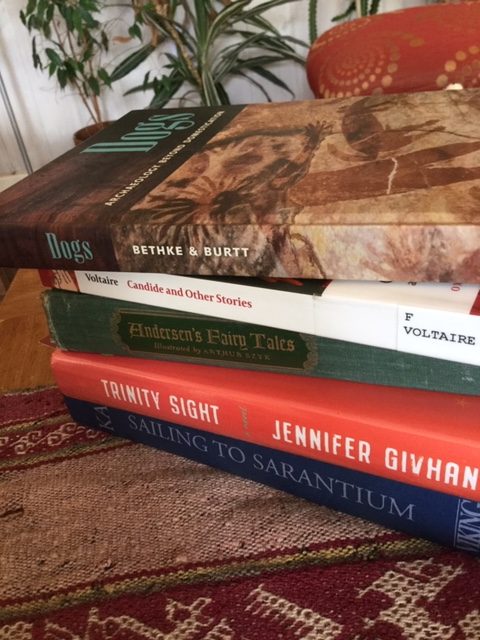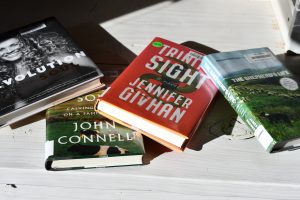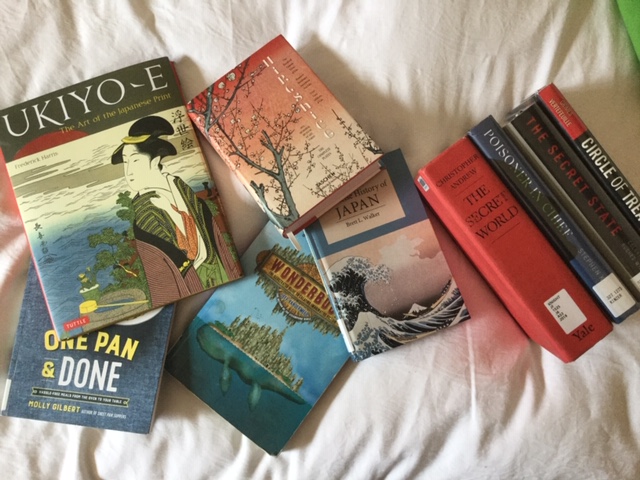Anyone looking at my what I’ve been reading lately posts would probably notice: I like to read books in translation. By books in translation I mostly (but not entirely) mean, books originally published in a non-English language that I then read in English. As I’ve discussed here before, one of my all-time favorite novels is If On A Winter’s Night a Traveler, written and originally published in Italian; a sampling of other things I’ve read in the not-too-distant past that were originally published in a language other than English include Basho’s poetry, The Godmother, Baron in the Trees, Core of the Sun, and the Mirror Visitor Quartet. It’s not too hard for me to rattle off others that I love: Smilla’s Sense of Snow. The Neapolitan Novels. Momo (the book not the internet hoax). What I Talk About When I Talk About Running. I could go on and on. And that’s just the ones I remember offhand, not the ones that I enjoyed but am not remembering now, or the ones that I felt equivocal about, or even the ones I hated. I am glad I read them all, because they made my world bigger.
I will sometimes give works written in French or Spanish a read in their original language as well as in translation, but usually after having read the English version. This is partly because I’m not as fluent a reader in French and Spanish as I am in English, but it’s also because I love the insight into the art of translation. Reading the translation first and then the original not only improves my comprehension of the original, it renders me in awe of translators. Sometimes it also makes me frustrated with them, but when I read this way I am acutely aware that capturing an author’s art while getting meaning across is an impossible task (see this article for more about this!). A translation always walks a fine line between too literal and not literal enough. I find this line fascinating. I’m such a geek about this that sometimes I’ll try to read something originally published in – and which I first read in – English in its French or Spanish translation, just to see what it’s like, what new shades of meaning emerge when it’s put in another language.
(At least at this point, my reading ability in other languages isn’t good enough for me to be able to do this with works not in French or Spanish, but I keep on studying. I especially hope to add Italian to the list of languages I can read in – it’s close enough to Spanish and French that I think I should be able to get there with some concentrated study, and I am especially fond of the Italian works in translation I’ve read – but I’ve been working on German, for other reasons, recently. At some point I’d like to work on Japanese.)
Given this (admittedly peculiar) interest, and given that I travel (or used to, pre-COVID19) a lot for work, it probably won’t surprise you to hear that when I travel outside the USA I always try to spend some time browsing local bookstores. I find so many books that haven’t ever been translated into English; and at the same time, I’ve found that non-American bookstores often have an excellent stock of literature in translation (and not just translated from the English, either).
All this makes me wonder: what’s behind my difficulty in finding books in translation here at home? Are plenty of works translated, but the marketing machine for these books does not reach me, for whatever reason? Or are there in fact relatively few, and if so, does this indicate American insularity/unwillingness to buy translated works, or something more general such as the difficulty of the art of translation?
(In case you are wondering, as I was, if it is really true that books in translation aren’t as widely available in English as they are in other languages, a quick search found me a number of articles suggesting that indeed, this is the case: this article, which is about English-language translations in general, and this post, titled “Why Do Americans Read so Few Books in Translation?”, were two that I found particularly interesting. It does appear that the issue is not that I’m not able to find books that have been translated, but rather that there are relatively few non-English books that are ever translated into English.)
Works in translation are on my mind right now in part as a result of the recent passing of Carlos Ruiz Zafón, described as “the most-read Spanish author since Cervantes” in his obituary in the Guardian. I did eventually read The Shadow of the Wind in Spanish, but I started with the English translation. My life would be poorer without ever having encountered his work, or Italo Calvino’s, or Hannelore Cayre’s or Haruki Murakami‘s or Elena Ferrante‘s or Michael Ende‘s or that of so many others.







